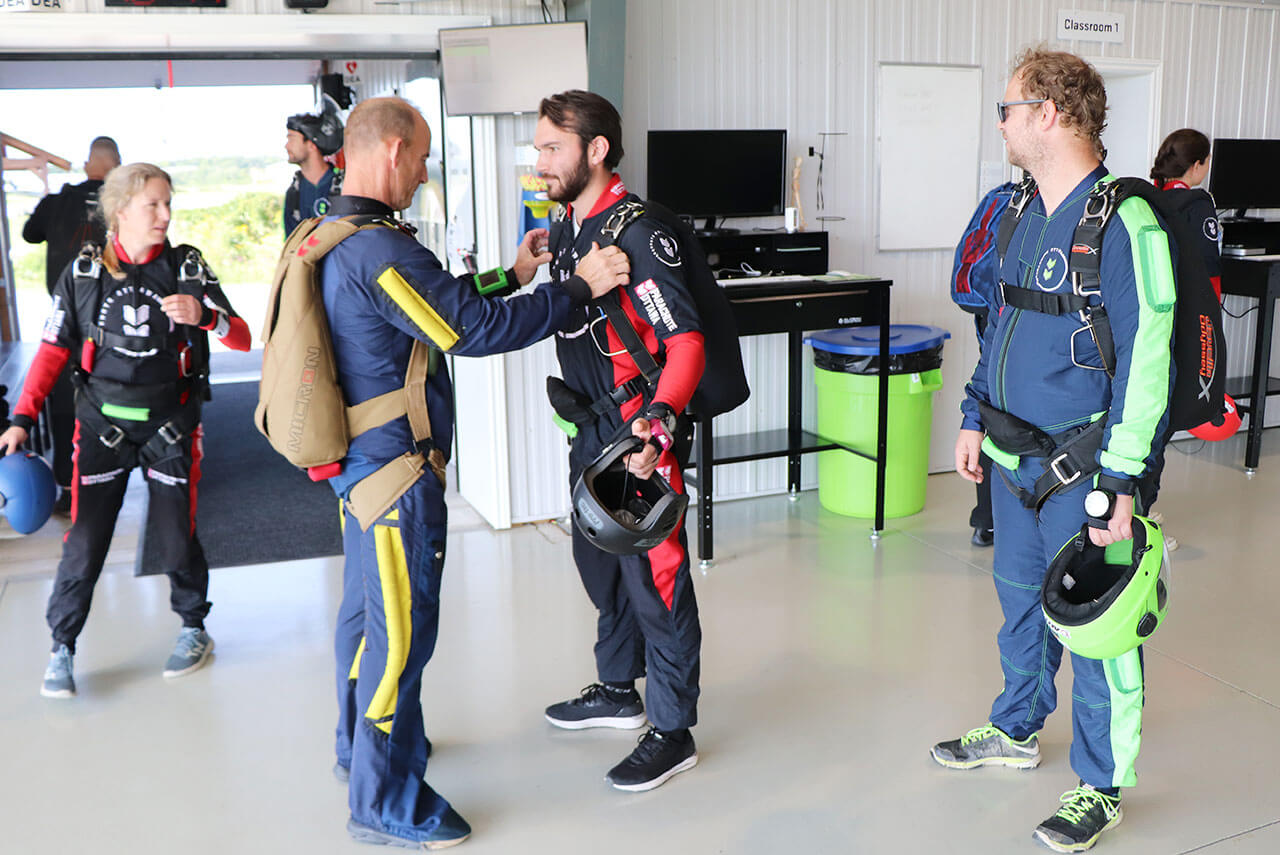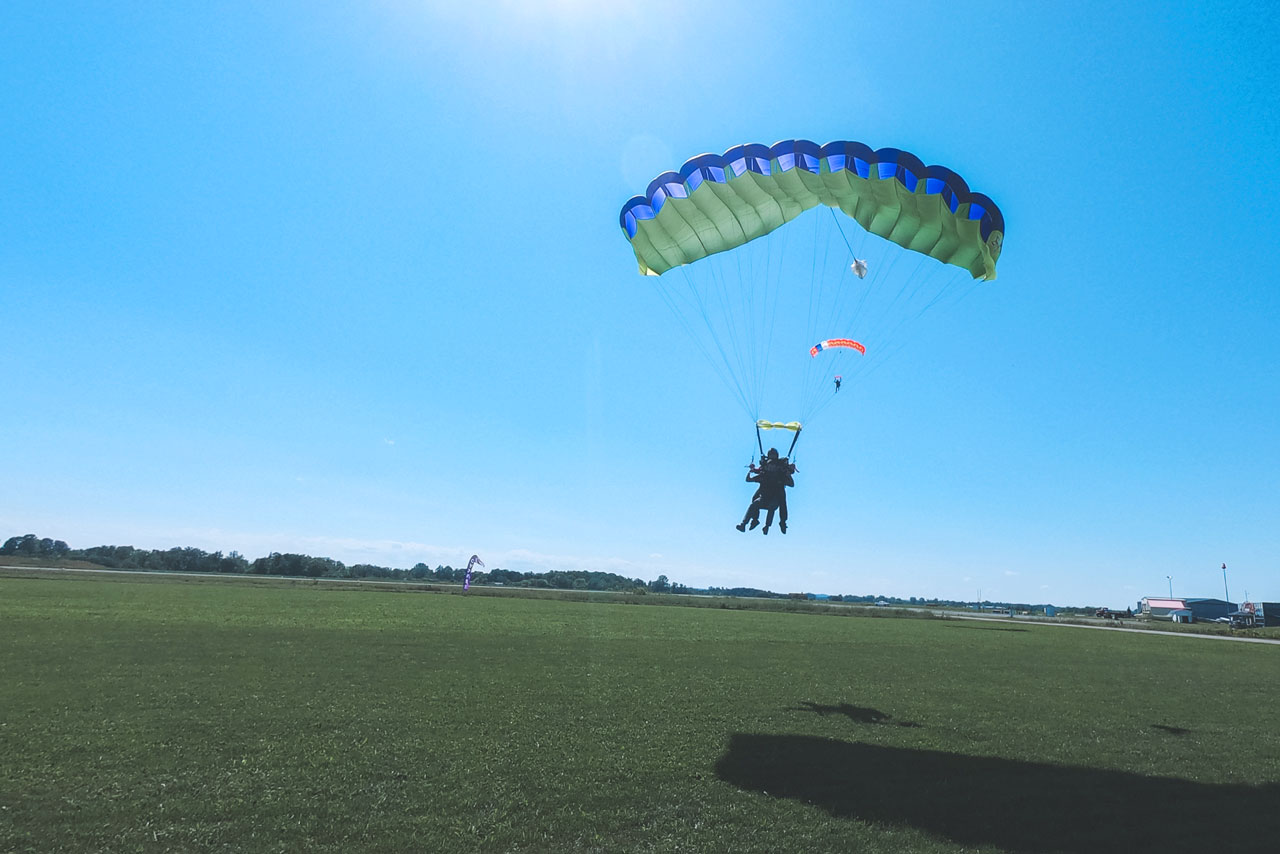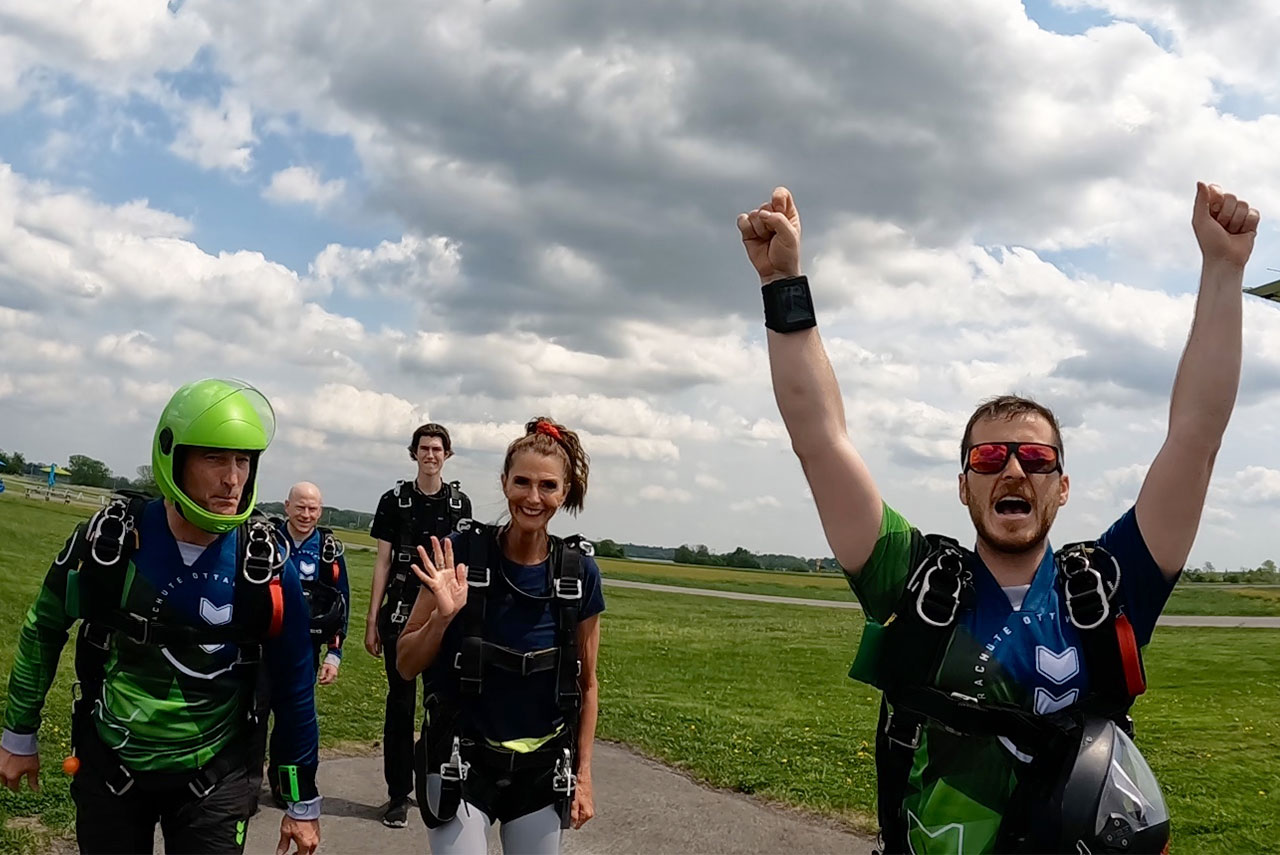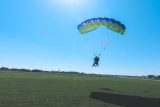The Major Disciplines of Skydiving
DZ News
Posted by: Parachute Ottawa
10 months ago
Many people don’t realize that skydiving is more than just leaving an airplane door and falling through the sky. There are actually a variety of skydiving disciplines that are available to people who want to hone their skills and grow as an experienced skydiver.
When compared to the excitement of skydiving, sports like football and basketball just don’t compete. Skydiving is one of the most dynamic and thrilling activities out there, and the many skydive types that are available to those who participate in high-flying antics will keep any adrenaline junkie endlessly entertained.
So, what are the different types of skydiving? Read on to learn about the many different options skydivers have after they leave the airplane and answer the question: What are the six major styles of skydiving?
Student Skydiving

This is the first step in branching out into other skydiving disciplines and where skydivers initially get acquainted with the most important skydiving safety tips. The category of student skydiving covers all tandem jumps, as well as Progressive Freefall Program (PFF) and the A Program coach jumps.
Student skydiving programs are highly organized and meant to help new skydivers build the skills and knowledge to safely participate in more complicated jumps. Skydiving students have access to cutting-edge resources, detailed educational materials, and highly-experienced instructors who will usher them into the wider world of skydiving disciplines.
Formation Skydiving (FS)
Formation skydiving or, as it’s known in the industry, belly flying, is the type of jumping that most people associate with sport skydiving. It’s the discipline that shows up in TV commercials and on inspirational posters in doctors’ offices, and forms the basis for all other skydiving skills.
Flying in an arch position in a belly-to-earth orientation is the very first position all skydivers learn, and is the most controlled and stable flying technique. But don’t let it fool you, belly flying can actually get quite advanced. The formations formed by high-level formation skydivers are complex, difficult, and impressive. In fact, the record for largest formation skydive sits at 400 people!
Vertical Formation Skydiving (VFS)
The other main version of formation skydiving is of the vertical persuasion, often called free flying or freefly skydiving. Vertical formation skydiving is exactly what it sounds like – skydivers building formations while flying in vertical orientations.
Vertical body positions include:
- Sit Flying
This position means the skydiver bends their hips and knees at 90 degree angles, and they look just like they’re sitting in a chair in the sky.
- Stand Flying
Flying in this position is basically the in-air version of a pencil dive. A skydiver in a stand fly position will have a straight back and legs, and might even reach their hands straight above their head.
- Head Down Flying
The ‘head down’ in this position refers to the fact that this type of flying is inverted! Imagine someone flying through the sky on their head like a lawn dart and you’ve got the right idea.
These positions allow skydivers to fly at increased freefall speeds, often reaching 270 kmh and beyond! Vertical formations build both horizontally (like standard formation skydives) and vertically by combining different vertical body positions. The added dimension means that formations can get extremely interesting!
Wingsuiting & Movement
You might be surprised to find out that not all skydiving is vertically inclined. Innovations in gear and technique have introduced the ability to cover great distances horizontally while in freefall, like a glider would. Some skydivers do this with body position and others do it with specialized suits.
Angle flying is like a mixture between head down freeflying and horizontal gliding. This discipline involves skydivers aiming their upper bodies downward, reaching extreme speeds and using their bodies like a sail in the wind. These jumps are often done in groups and result in an angle-shaped trajectory, which is where the name comes from.
Skydivers who REALLY want to increase their freefall time and glide distance will don a wingsuit and soar like a flying squirrel. Wingsuit skydiving involves wearing a full body nylon suit that equips the wearer with a wing under each arm and between their legs. This suit actually creates lift and allows the skydiver to glide great distances before having to deploy their parachute.
Canopy Piloting

For those who can do without freefall, canopy piloting disciplines focus on the parachute and everything that can be done with it. The main canopy piloting category is known as swooping, and involves the pilot flying their canopy in such a way to build up incredible speed before planing out and skimming just inches above the ground.
Swoopers can focus their efforts on speed, distance, accuracy, or even acrobatics. This type of flight requires extreme skill and allows for a very small margin of error, but the adrenaline rush and payoff makes it worth it for those who are passionate about canopy flight.
Canopy pilots can also enjoy their parachutes at higher altitudes by flocking with other canopies or even docking on each other’s lines in a discipline called Canopy Relative Work (CRW).
Skydiving Competition

Competitive skydiving technically isn’t its own discipline, but more a way to execute all of the other disciplines. Some skydivers jump for fun and enjoy the euphoria of learning and playing with friends in the sky. Other skydivers approach jumping like a professional sport, training and dedicating their lives to high-level competition.
Skydiving competitions exist for every discipline in the sport and also offer options for various levels of ability. People who are new to a discipline can compete at a beginner level against other people at their level, and difficulty categories go all the way up to national and international professional meets.
Competitions are a great way to perfect skills, meet new people, and achieve goals.
Parachute Ottawa just so happens to be the perfect place to skydive, regardless of where you are in your journey! Whether you’re considering tandem skydiving, or you’re a high-level professional jumper looking to compete, there are a number of opportunities to learn, progress, and compete at Parachute Ottawa this season. Ready to start at square one? Book your tandem skydive today! Blue skies.
Categories:
You May Be Interested In:

How Do Skydivers Know Where to Land?
1 month ago by Parachute Ottawa

Understanding the Skydiving Student Program Pathway
2 months ago by Parachute Ottawa

Skydiving Anxiety and How You Can Prepare
3 months ago by Parachute Ottawa

PO Feature: Skydiving is for All Abilities
3 months ago by Parachute Ottawa

